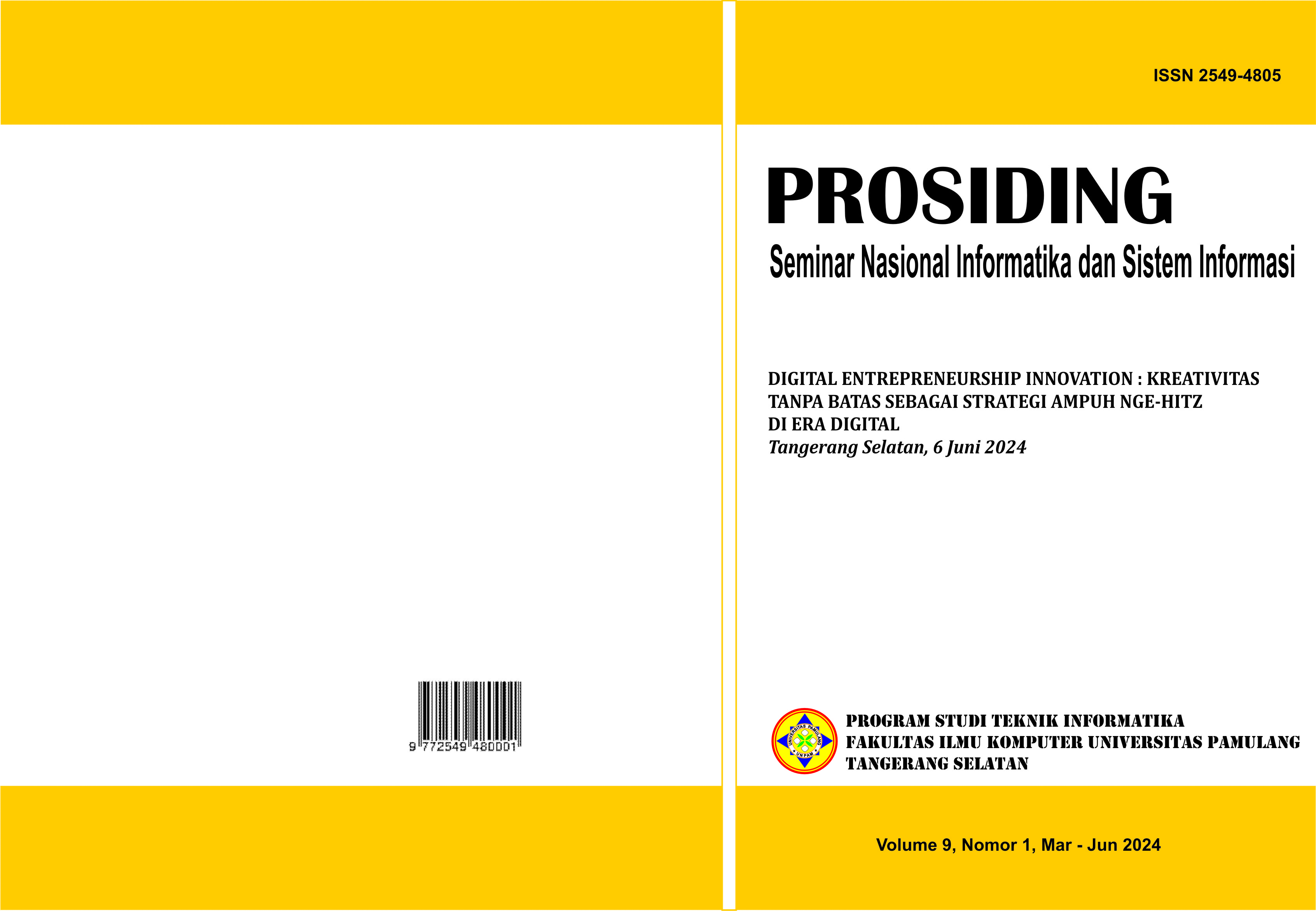PERANCANGAN DAN IMPLEMENTASI SISTEM VIRTUAL PRIVATE NETWORK (VPN) DENGAN METODE POINT-TO-POINT TUNNELINK PROTOKOL MENGGUNAKAN PERANGKAT SOPHOS XG FIREWALL UNTUK KOMUNIKASI ANTARA KANTOR PUSAT DENGAN KANTOR FARM PADA PT XYZ
Abstract
Jaringan komputer saat ini merupakan kebutuhan yang sangat penting bagi setiap perusahaan, dimana jaringan komputer berfungsi sebagai sarana komunikasi, baik komunikasi didalam perusahaan itu sendiri maupun dengan pihak luar perusahaan serta kantor cabang, selain untuk komunikasi jaringan komputer juga bisa digunakan untuk kebutuhan koneksi ke beberapa perangkat atau sistem yang ada di kantor supaya bisa diakses baik dari kantor pusat maupun sebaliknya, serta bisa juga diakses dari dari jaringan internet diluar perusahaan namun tetap dengan aman. PT. XYZ adalah salah satu perusahaan yang bergerak dibidang peternakan sapi yang mempunyai kantor pusat di Jakarta, serta mempunyai peternakan di daerah Garut Jawa Barat, dalam menjalakan operasional peternakannya PT XYZ sudah menggunakan teknologi IoT dimana untuk pengaturan kandang seperti suhu dan cahaya bisa diatur dan dimonitoring melalui jaringan internet, selain untuk pengoperasian kandang teknologi IoT juga digunakan untuk melihat masing-masing sapi dapat menghasilkan susu berapa banyak setiap harinya, akan tetapi beberapa perangkat IoT dan sistem yang ada di kantor farm hanya bisa diakses dari jaringan LAN, sehingga ketika akan mengakses perangkat-perangkat tersebut dari kantor pusat maupun dari luar kantor pusat mengalami kendala. Permasalahan yang dihadapi oleh PT. XYZ adalah belum mempunyai jaringan interkoneksi dari kantor farm ke kantor pusat yang sifatnya seperti jaringan LAN. Berdasarkan dari hasil analisa yang penulis lakukan, sistem yang diperlukan oleh PT. XYZ adalah sistem jaringan VPN (Virtual Private Network) dengan menggunakan metode PPTP (Point-to-Point Tunneling Protocol). Untuk implementasi sistem VPN tersebut penulis akan menggunakan perangkat Sophos Firewall XG 135 sebagai server dan Sophos RED 15 sebagai clientnya.
Downloads
Published
Issue
Section
License

This work is licensed under a Creative Commons Attribution-NonCommercial-ShareAlike 4.0 International License.
Authors who publish with this journal agree to the following terms:
- Authors retain copyright and grant the journal right of first publication with the work simultaneously licensed under a Creative Commons Attribution License that allows others to share the work with an acknowledgement of the work's authorship and initial publication in this journal.
- Authors are able to enter into separate, additional contractual arrangements for the non-exclusive distribution of the journal's published version of the work (e.g., post it to an institutional repository or publish it in a book), with an acknowledgement of its initial publication in this journal.
- Authors are permitted and encouraged to post their work online (e.g., in institutional repositories or on their website) prior to and during the submission process, as it can lead to productive exchanges, as well as earlier and greater citation of published work (See The Effect of Open Access).
Prosiding Seminar Informatika dan Sistem Informasi have CC-BY-NC-SA or an equivalent license as the optimal license for the publication, distribution, use, and reuse of scholarly work.
In developing strategy and setting priorities, Prosiding Seminar Informatika dan Sistem Informasi recognize that free access is better than priced access, libre access is better than free access, and libre under CC-BY-NC-SA or the equivalent is better than libre under more restrictive open licenses. We should achieve what we can when we can. We should not delay achieving free in order to achieve libre, and we should not stop with free when we can achieve libre.
Prosiding Seminar Informatika dan Sistem Informasi is licensed under a Creative Commons Attribution 4.0 International License
YOU ARE FREE TO:
- Share — copy and redistribute the material in any medium or format
- Adapt — remix, transform, and build upon the material for any purpose, even commercially.
- The licensor cannot revoke these freedoms as long as you follow the license terms

